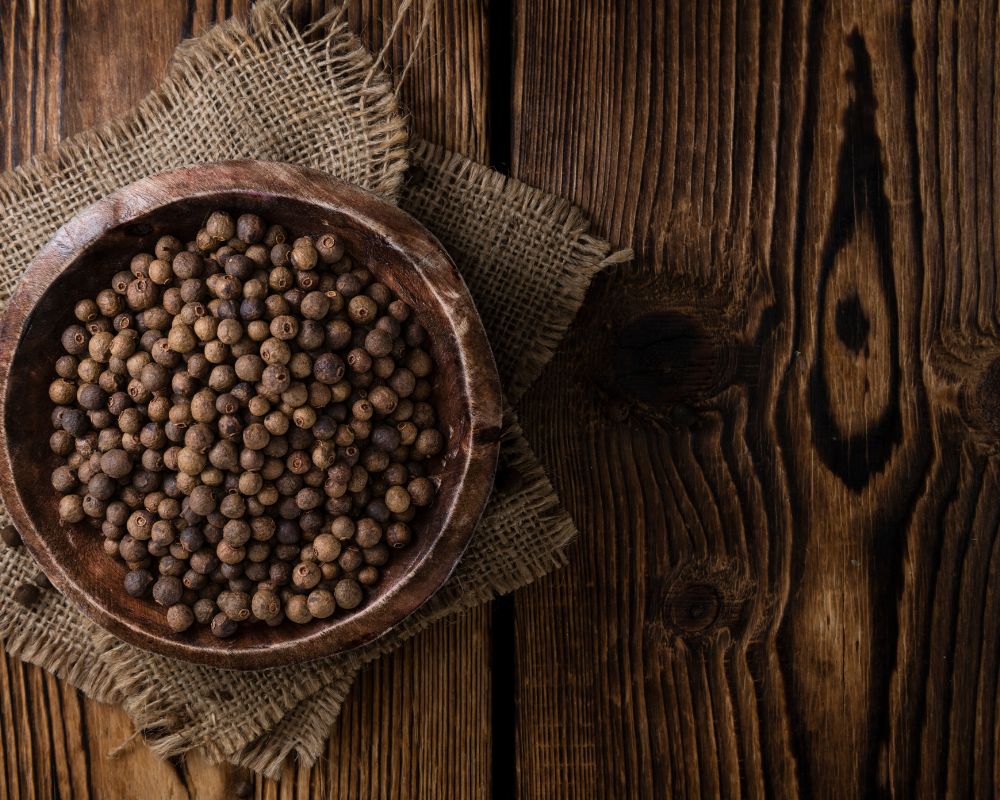Recado rojo, or achiote paste, is a popular spice blend essential in Mexican and Belizean cuisines. The orange-red mixture injects earthy flavors and color when used as a marinade or rubbed directly on meats. The red recado is essential when making the classic Yucatan slow-roasted pork dish cochinita pibil.
Table of Contents
What is Recado rojo?

Recado rojo is a traditional Mexican spice blend used as a seasoning paste or marinade for meat, stews, and other local dishes such as tacos and tortillas.
It contains annatto seeds, oregano, black pepper, garlic, cumin, coriander, allspice, salt, and other spices.
| Origin | The Mesoamerican Indians that occupied territories in Mexico, Guatemala, and Belize |
| Appearance | Orange-red or brick-red color |
| Flavor profile | Sweet, savory, and smoky |
Origin
Recado traces its roots to the Mayans, the Mesoamerican Indians that occupied territories in Mexico, Guatemala, and Belize.
The indigenous group used recados as a base for most of their meat dishes. To this day, spice pastes such as recado rojo (achiote paste), recado negro (black recado), and recado blanco (white recado) are widely used in Yucatan and Oaxaca cultures.
The name recado comes from the Spanish word that translates to “message” or “complement,” which is in reference to how recados are used to convey more flavor or enhance the taste of various dishes.
Appearance
Recado rojo leans heavily on annatto seeds, giving it its orange-red or brick-red color. Thus, it is also called red recado.
The spice blend is made by mixing annatto seeds and other spices, turning them into fine powder using a food processor or a spice grinder. It can be used as a dry rub or mixed with orange juice or vinegar to create a red paste.
Flavor profile
The recado rojo gives dishes complex flavors, ranging from sweet, savory, and smoky.
The spice blend adds nutty, earthy, and herbal tones with hints of subtle spiciness and citrusy flavors, all of which can be attributed to the different spices in the mix.
Nutritional Benefits of Recado rojo
Annatto, the main component of recado rojo, has been associated with various health benefits. This natural food coloring is rich in antioxidants and antimicrobial properties. Experts are also looking into how it may help reduce inflammation, improve skin, and improve heart health.
The same is true for the other ingredients. For example, garlic may help lower blood pressure and cholesterol levels, among other medicinal properties.
Oregano, cumin, coriander, allspice, and the other spices in red recado are also known for various nutritional benefits.
What ingredients are in Recado?









Recado rojo or achiote paste are made using the following ingredients:
- Annatto seeds
- Oregano
- Coriander
- Cumin
- Allspice
- Garlic
- Black pepper
- Clove
- Salt
Recado negro, another popular Yucatecan spice blend, is made from dried chiles, corn tortillas, garlic, onion, oregano, annatto, and cumin. Meanwhile, recado blanco typically contains black peppercorns, cinnamon branches, cloves, cumin, and coriander, among others.
Is recado the same as achiote?
The savory and tangy spice paste recado rojo is also known as achiote or annatto paste.
Where can Recado be found?
The red recado is present in traditional dishes such as tamales, al pastor, tacos, stewed chicken, rice, and beans.
Recado has spread its influence far beyond Mexico and Belize. You’ll also find dishes in Guatemala, Honduras, Cuba, El Salvador, Dominican Republic, and Brazil that require recado rojo.
Where to buy recado paste?
You can buy recado rojo or achiote paste from your local grocery store with traditional Mexican or Central American spices and seasonings.
You can also get the seasoning paste from online retailers such as Amazon or MexGrocer.
How to make recado rojo?
If you cannot find recado rojo, you can easily make it at home by mixing the basic spices. There are also excellent substitutes such as harissa, a paste made from chilies, garlic, caraway seeds, and coriander.
Likewise, you can use sambal oelek, a blend of red chilies, vinegar, salt, and sugar. You can purchase harissa from Middle Eastern specialty stores and the sambal oelek from Asian grocery stores.

